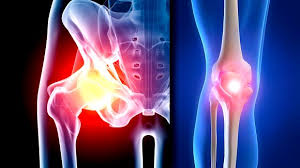- Home
- Editorial
- News
- Practice Guidelines
- Anesthesiology Guidelines
- Cancer Guidelines
- Cardiac Sciences Guidelines
- Critical Care Guidelines
- Dentistry Guidelines
- Dermatology Guidelines
- Diabetes and Endo Guidelines
- Diagnostics Guidelines
- ENT Guidelines
- Featured Practice Guidelines
- Gastroenterology Guidelines
- Geriatrics Guidelines
- Medicine Guidelines
- Nephrology Guidelines
- Neurosciences Guidelines
- Obs and Gynae Guidelines
- Ophthalmology Guidelines
- Orthopaedics Guidelines
- Paediatrics Guidelines
- Psychiatry Guidelines
- Pulmonology Guidelines
- Radiology Guidelines
- Surgery Guidelines
- Urology Guidelines
Hip osteoarthritis: Severe occupational strain increases the risk

People who in the course of their work put long-term physical strain on their bodies have an increased risk of developing osteoarthritis of the hip. This is especially the case for lifting and carrying heavy loads over long periods of time. This is the result of a systematic review reported by Annekatrin Bergmann and coauthors in the current issue of Deutsches Ärzteblatt International (Dtsch Arztebl Int 2017; 114: 581-8). The risk increases with increasing exposure. In men, the risk is doubled by long term lifting of heavy loads; this rises to a factor of 2.5 if the work is additionally associated with heavy manual labor or long periods of walking or standing. Not enough data are available to date to make it possible to estimate the risk in women, according to the authors, most of whom are occupational physicians. The study was commissioned and funded by the German Federal Institute for Occupational Safety and Health (BAuA). According to the authors, women have thus far been clearly underrepresented in available studies, and no evaluable data were available to date on classical "women's jobs" that entail physical strain (e.g. nursing).
The authors deduct preventive approaches from their results. Loads of 20 kg or more should not be lifted without mechanical assistance. Occupational screening should include hips after 15-20 years in the job at the very latest, in order to detect signs of hip osteoarthritis as early as possible. Measures for reducing physical strain should be prioritized because a relevant effect of training and exercise on the progression of hip osteoarthritis in the occupational context has not been shown to date.
For more details click on the link: http://dx.doi.org/10.3238/arztebl.2017.0581

Disclaimer: This site is primarily intended for healthcare professionals. Any content/information on this website does not replace the advice of medical and/or health professionals and should not be construed as medical/diagnostic advice/endorsement or prescription. Use of this site is subject to our terms of use, privacy policy, advertisement policy. © 2020 Minerva Medical Treatment Pvt Ltd